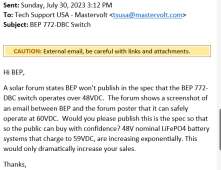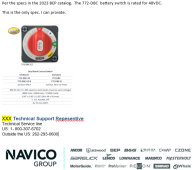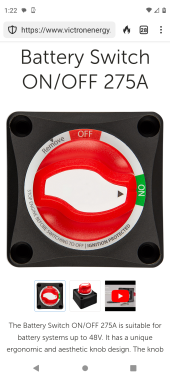OffGridInTheCity
Solar Wizard
I use a 400a ABB SACE S3 w/24v shunt-trip for my 48v powerwall w/24,000w of inverting.
Here's a plain ABB SACE S3 3-pole 200a for a reasonable price ($100) https://www.ebay.com/itm/282768920712 They are ~400-500vdc certified.
These used ABB SACE breakers are among the highest quality hi-volt-dc/amps around and come in a large variety of 3pole, 2pole, shunt-trip (24v, 120v ac or dc) options. If you're patient a month or 2, you can usually find a good match for what you need.
Here's a plain ABB SACE S3 3-pole 200a for a reasonable price ($100) https://www.ebay.com/itm/282768920712 They are ~400-500vdc certified.
These used ABB SACE breakers are among the highest quality hi-volt-dc/amps around and come in a large variety of 3pole, 2pole, shunt-trip (24v, 120v ac or dc) options. If you're patient a month or 2, you can usually find a good match for what you need.
Last edited:





